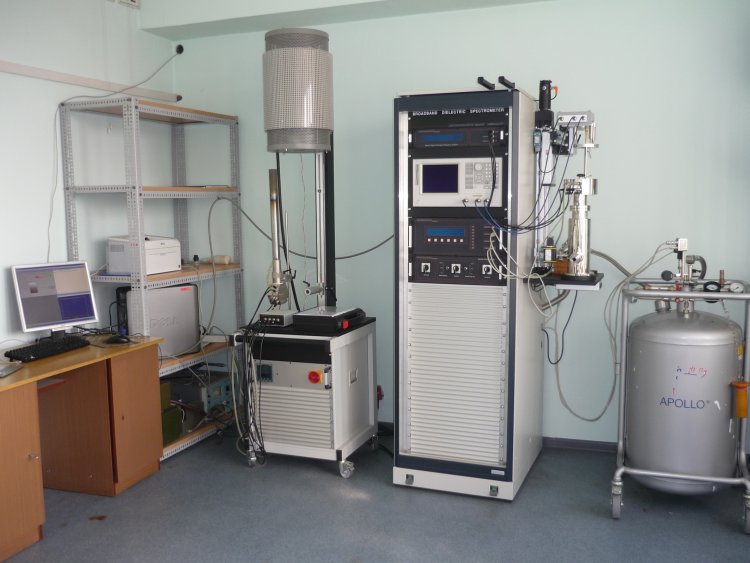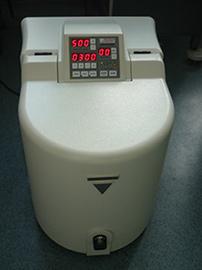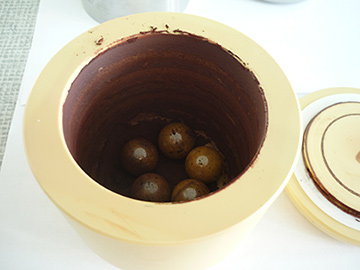Research
Research objectives
We are researching the physics of nanostructures aiming both at modeling and understanding of their properties. The research concerns fundamental problems important also in the context of practical application in nanotechnology (including spintronics and spin-calorytronics). We focus in particular on the spin transport, electron correlations (Hubbard-type, Coulomb blockade, Kondo effect), structural imperfections (boundary effects, interfaces, defects, admixtures, ripples, etc.). The development of the theory describing the processes involving both charge and spin degrees of freedom as well as heat transfer in the nanoscale is essential for the creation of future generations of innovative electronic devices. These should realize the double goal of improved performance and energy efficiency, important for environment protection and thereby economic growth.
Research profile
Theoretical studies of electronic, magnetic and magneto-thermoelectric phenomena in nanoscopic systems. In particular, intensive investigations on carbon nanostructures (nanotubes and graphene), graphene-like systems and quantum dots. A wide range of computational methods is used, starting from analytical methods and preliminary analysis by means of simple programs (Mathematica and so on) through the tight-binging method up to advanced first principle methods. In transport studies, the Green’s function technique is used in combination with the Landauer-Büttiker and Keldysh formalisms.
Research projects
- Project 6 PR UE - Carbon nanotube devices at the quantum limit CARDEQ (2006-2009), head - Prof. S. Krompiewski
- Projckt MNiSW - Carbon nanotube devices at the quantum limit SPUB (2006-2009), head - Prof. S. Krompiewski
- Supervisor’s Project MNiSW – Analysis of the influence of strong correlations on electronic transport in nanostructures(2009-2010), supervisor – Dr. habilit. Lipiński, Prof. IFM PAN (Ph.D student. – BSc. eng. D. Krychowski)
- Project MNiSW – The effect of topology, interfaces and electron correlations on the charge and spin transport in graphene (2010-2013), head - Prof. S. Krompiewski
- Project NCN - Graphene-based (and similar) nanostructures for spintronics and spin caloritronics. Theoretical studies (2014-2017), head - Prof. S. Krompiewski
Scientific achievements
- Studies on the spin Hall effect in one- and two-layer graphene. Demonstrating that in the presence of perpendicular electric field, there is a phase transition from the topological insulator phase to the ordinary insulator phase.
- Performing model shot noise computations for a double magnetic tunnel junction. Theoretical predictions have been verified by comparison with experimental results for Fe/MgO/Fe/MgO/Fe.
- Studies on the effect of the transverse magnetic anisotropy on the spin switching of a single atom or a single magnetic molecule by current. It has been shown that the quantum tunneling of magnetization occurs in certain resonance fields when at least one electrode is ferromagnetic.
- Analyzing a graphene bilayer it was shown that beyond the van Hove singularity region the impurity spin polarization for SU(2) symmetry is opposite to the bilayer polarization, whereas it is the same for SU(4). Close to the singularity, a reversal of the impurity magnetic moment is possible.
- Examining the effect of electrode/graphene-structure interfaces, and the effect of electron edge states (including possible appearance of magnetic moments) on the electronic transport.
- Development of an effective recursive method (knitting) to study a multi-electrode electronic transport. A strong spin-valve type effect has been found in the case of four electrodes located in the centers of the square flake.
- Based on ab initio band structure computations combined with a few complementary techniques for analyzing many-body effects, the Kondo effect for cobalt adatoms placed on a graphene zigzag ribbon has been examined. In particular, the competition of spin and orbit degrees of freedom, and the impact of relevant details of both the electronic and magnetic structures of the ribbons have been thoroughly discussed. Similar computations have also been performed for a quasi two-dimensional (buckled) silicene layer with a cobalt adatom.
- It has been shown that magnetic moments at zigzag edges of graphene ribbons may be considerably weakened or completely suppressed after application of external current electrodes. The effect strongly depends on electronic nature of the graphene/electrode interface and on the distance between the electrodes.
- The following structural imperfections have been also taken into account: the aforementioned edge effects, inter-grain boundaries in polycrystalline carbon nanostructures, and the so called antidots (empty regions).
In 2009-2017, 5 research projects were carried out (including 1 European and 1 bilateral “Harmonia” projects). The projects were devoted to studies of physical phenomena in carbon nanotubes, graphene and in graphenelike nanostructures of potential importance for innovative applications in nanoelectronics and spintronics.








